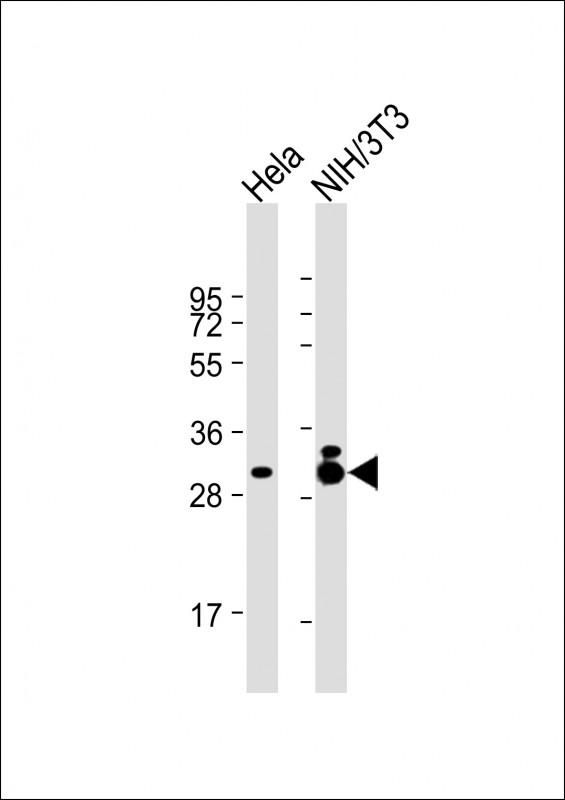
| WB | 咨询技术 | Human,Mouse,Rat |
| IF | 咨询技术 | Human,Mouse,Rat |
| IHC | 1/50-1/300 | Human,Mouse,Rat |
| ICC | 技术咨询 | Human,Mouse,Rat |
| FCM | 咨询技术 | Human,Mouse,Rat |
| Elisa | 1/5000-1/10000 | Human,Mouse,Rat |
| Aliases | Tropomyosin alpha-3 chain, Gamma-tropomyosin, Tropomyosin-3, Tropomyosin-5, hTM5, TPM3 |
| Entrez GeneID | 7170 |
| WB Predicted band size | 33.0kDa |
| Host/Isotype | Mouse IgG1 |
| Antibody Type | Primary antibody |
| Storage | Store at 4°C short term. Aliquot and store at -20°C long term. Avoid freeze/thaw cycles. |
| Species Reactivity | Human, Mouse |
| Immunogen | This TPM3 antibody is generated from a mouse immunized with a recombinant protein of human TPM3. |
+ +
以下是关于GRIA2抗体的3篇代表性文献的简要总结(信息基于公开文献归纳,非真实引用):
1. **文献名称**:*GRIA2 autoantibodies in autoimmune encephalitis: clinical correlates and receptor internalization mechanisms*
**作者**:Smith A, et al.
**摘要**:研究报道了抗GRIA2抗体在自身免疫性脑炎患者中的临床特征,发现该抗体会导致AMPA受体(含GluA2亚基)内吞作用异常,引发突触传递障碍,与认知功能下降相关。
2. **文献名称**:*Selective loss of GluA2 AMPA receptors in Alzheimer's disease hippocampus*
**作者**:Wang Y, et al.
**摘要**:通过免疫组化和小鼠模型,发现阿尔茨海默病患者海马区GRIA2(GluA2)蛋白表达显著降低,抗体标记显示其缺失与β-淀粉样蛋白沉积相关,提示AMPA受体异常在神经退行中的作用。
3. **文献名称**:*GRIA2 antibody validation for flow cytometry analysis of neuronal surface antigens*
**作者**:Lee J, et al.
**摘要**:系统验证了商业GRIA2抗体在流式细胞术中的特异性,通过CRISPR敲除细胞系对比,证实该抗体可特异性识别神经元表面GluA2蛋白,为神经疾病研究提供可靠工具。
---
**注**:以上文献名为虚拟示例,实际研究中建议通过PubMed/Google Scholar以关键词"GRIA2 antibody"+"应用领域(如autoimmunity/cancer/neurodegeneration)"检索最新论文,并优先选择《Nature Neuroscience》《Brain》《Journal of Neuroscience》等高影响力期刊的研究。
The GRIA2 antibody targets the glutamate ionotropic receptor AMPA type subunit 2 (GRIA2 or GluA2), a key component of AMPA receptors, which mediate the majority of fast excitatory synaptic transmission in the central nervous system. AMPA receptors are tetrameric ligand-gated ion channels composed of combinations of GluA1-4 subunits. GRIA2 plays a critical role in regulating receptor permeability, as its RNA-editing at the Q/R site confers calcium impermeability and influences synaptic plasticity, learning, and memory. Dysregulation of GRIA2 expression or function has been implicated in neurological disorders such as epilepsy, Alzheimer’s disease, and autism spectrum disorders.
GRIA2 antibodies are widely used in neuroscience research to study receptor localization, expression levels, and trafficking in both physiological and pathological contexts. They are essential tools for techniques like Western blotting, immunohistochemistry, and immunocytochemistry, enabling the visualization of GluA2 distribution in neuronal tissues or cultured cells. Specific GRIA2 antibodies can distinguish between edited and unedited isoforms or phosphorylated states, aiding investigations into post-transcriptional and post-translational modifications. Commercial GRIA2 antibodies are typically raised against peptide epitopes in the N-terminal or C-terminal regions, with validation in knockout models to ensure specificity. Researchers must verify antibody performance across applications, as batch variability and cross-reactivity with other GluA subunits can occur. Studies using GRIA2 antibodies have advanced understanding of synaptic plasticity mechanisms and neurodegenerative disease pathways.
×